Your cart is currently empty!
INTERVIEW | ANDI ZHANG
Andi Zhang is an architectural designer and a visual artist in the architecture field. She obtained her bachelor’s degree from the Southern California Institute of Architecture (SCI-Arc), and her master’s degree from the University of Pennsylvania. During her college, she took some classes not directly related to architecture, such as classes in visual expression, algorithms, philosophy, etc. It influences her to think of architecture in an abstract way and motivates her to create art pieces to show architecture in her eyes.
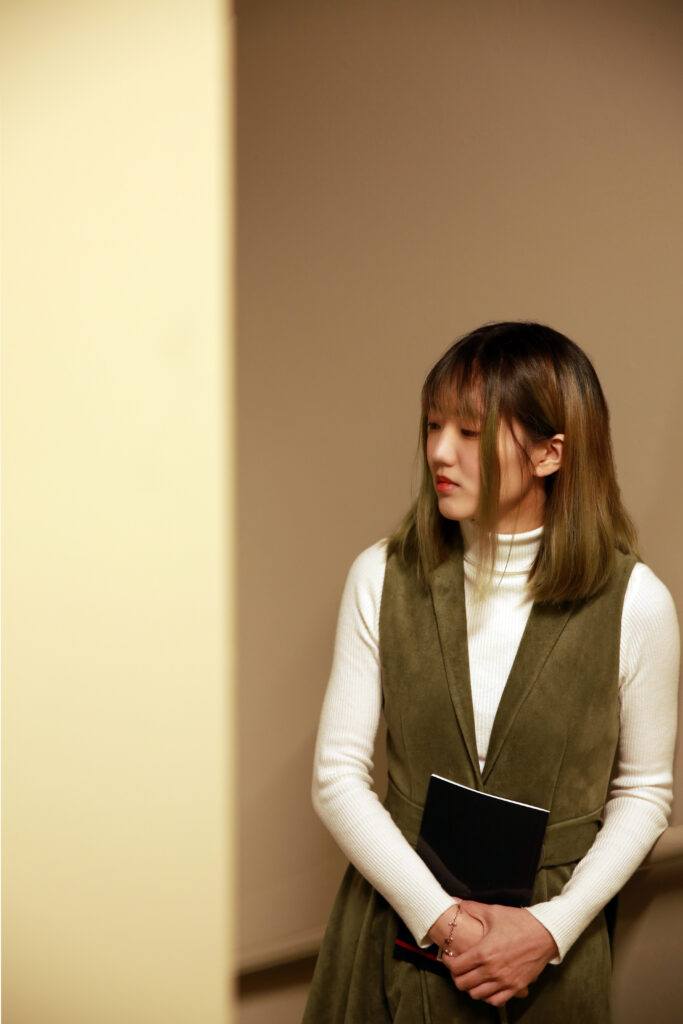
_____________________________________________________________________________________________
Andi explores architecture through unconventional approaches, moving beyond traditional standalone structures. She integrates diverse elements like ground, water, air, light, and human perspectives to shape architectural experiences. By employing algorithmic techniques, she generates dynamic compositions that involve splitting, merging, and blending these components. This process creates hybrid spaces where different functions converge within an expanded civic environment, dissolving the boundaries between built forms and the natural landscape.
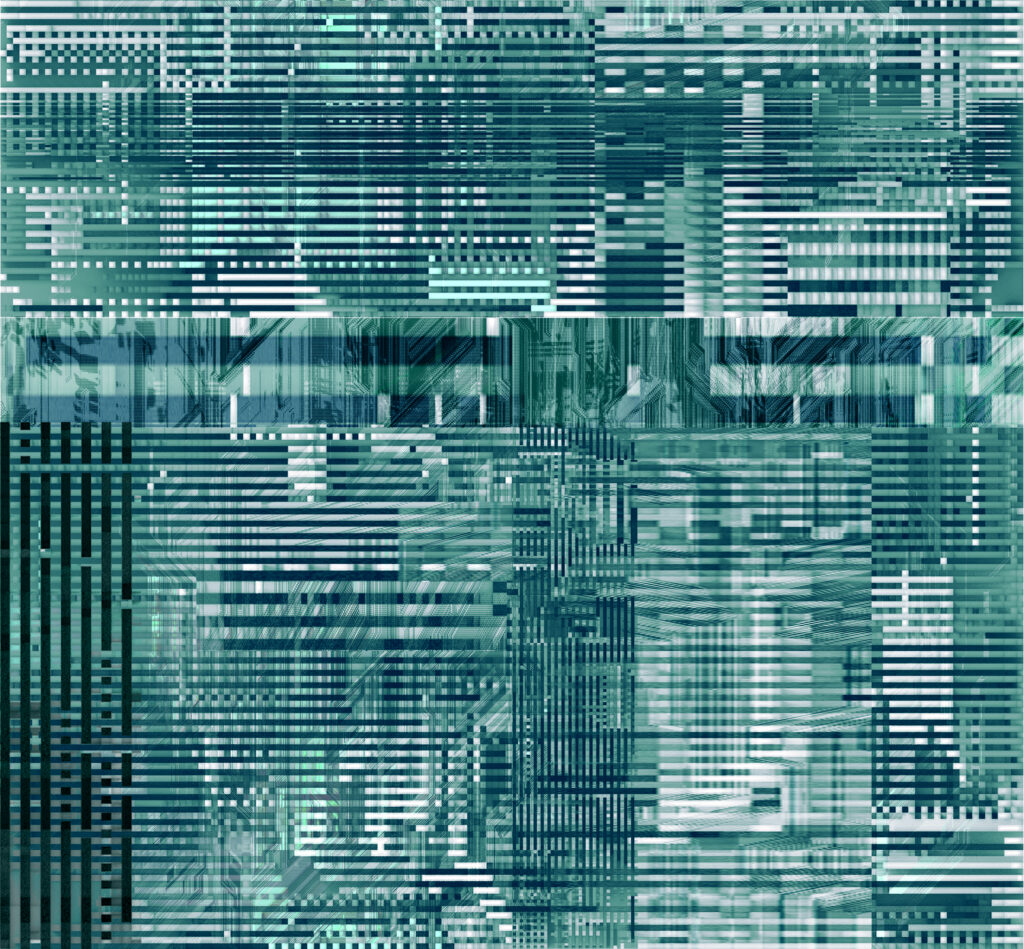
CITY (Digital Rendering), 2019 © Andi Zhang
Here are some potential answers to those questions:
-1.How did your experiences at SCI-Arc and the University of Pennsylvania shape your artistic and architectural approach?
My experiences at SCI-Arc and UPenn provided me with a strong foundation in both traditional architectural techniques and experimental approaches. SCI-Arc’s emphasis on innovation pushed me to challenge conventional design boundaries, while UPenn’s interdisciplinary approach encouraged me to blend different fields of study, such as visual arts, algorithms, and philosophy. This combination allowed me to develop a holistic approach that integrates both technical skills and creative expression in my work.
-2.You mention that your interdisciplinary studies, including courses in philosophy and algorithms, influenced your architectural thinking. Can you share a specific example of how these fields have impacted your design process?
Studying algorithms taught me to think of architecture as a dynamic system rather than static forms. For instance, I use algorithmic techniques to create designs that respond to environmental factors like light and airflow, making the space adaptive and alive. Philosophy, on the other hand, helped me explore abstract concepts like the nature of space and perception, which I apply by designing buildings that challenge traditional spatial boundaries and engage with the environment in unexpected ways.
-3.Your work focuses on integrating unconventional elements like air, light, and human perspective into architectural spaces. What drew you to explore these non-traditional components in your designs?
I believe that architecture is not just about physical structures but about the experiences they create. Elements like air, light, and perspective are essential to shaping how we perceive and interact with spaces. By incorporating these components, I aim to create environments that feel alive and responsive, encouraging people to engage with the architecture on a sensory level.
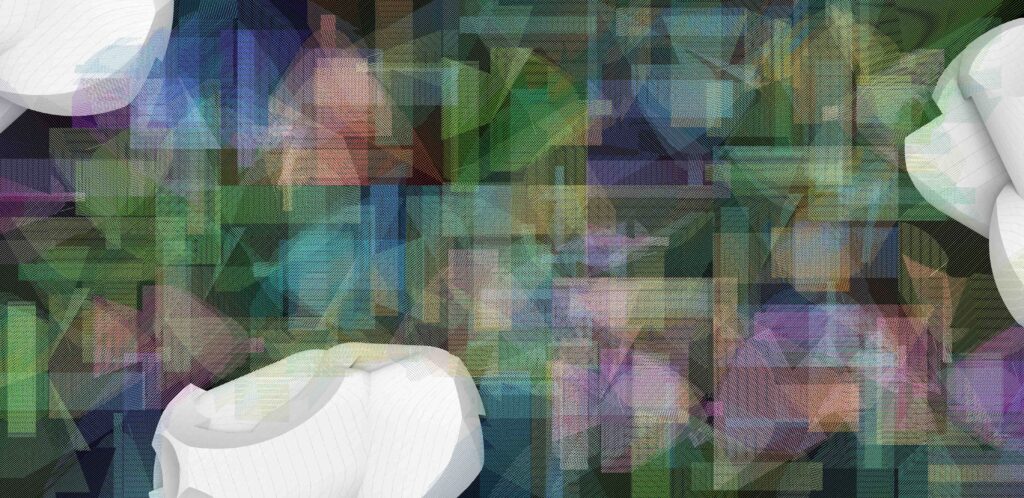
Vision (Texture), Digital Rendering, 36×74 inch, 2018 © Andi Zhang
-4.How do you approach the challenge of blending architecture with natural elements to create spaces where the boundaries between the built environment and nature are blurred?
I approach this by designing with both natural and artificial elements as part of the same system. For example, I may use water as a reflective surface that interacts with light and creates changing patterns on a structure’s façade, or incorporate airflow strategies that guide how people move through a space. The goal is to create a seamless dialogue between the building and its surroundings, so the architecture feels integrated into the environment rather than separate from it.
-5.You use algorithmic techniques to generate dynamic architectural forms. Can you explain how technology plays a role in your creative process?
Technology allows me to explore complex relationships within a design, such as how different materials interact under various conditions. Using algorithmic modeling tools, I can simulate and visualize the merging of architectural elements, leading to forms that are both functional and aesthetically intriguing. It enables me to push the boundaries of what’s possible in design by incorporating real-time data and adaptive components.
-6.What sparked your interest in exploring architecture beyond traditional structures and moving towards creating spaces that merge multiple elements?
I’ve always been fascinated by the idea that architecture can go beyond static structures to become something more immersive. Observing how natural landscapes are never truly separate from their surroundings inspired me to pursue designs where architecture behaves similarly—blending and interacting with the elements around it. This exploration challenges conventional design approaches and allows for more fluid and transformative spaces.
-7.How does your background in visual arts influence your architectural designs? Are there specific techniques or styles you draw from your art practice?
My visual arts background gives me a unique perspective on form and composition in architecture. I often use techniques like layering, blending, and contrast in my designs, similar to how I approach visual art. Additionally, I draw inspiration from abstract art, where the relationship between different elements and the use of negative space play an important role. This artistic influence helps me create architectural designs that feel dynamic and experiential.
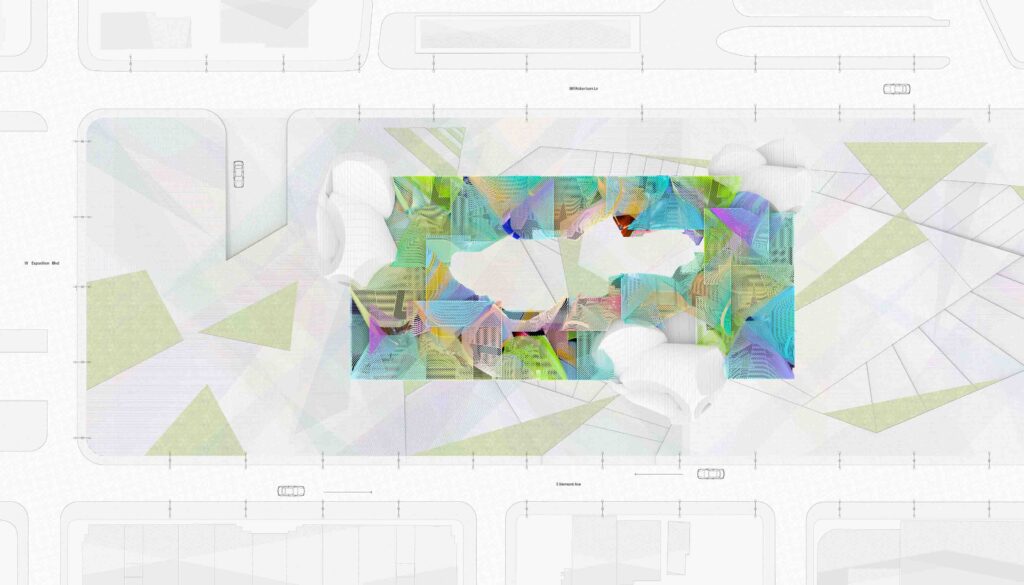
Vision (Plan), Digital Rendering, 42×24 inch, 2018 © Andi Zhang
-8.Can you talk about a project where the merging of different elements, such as ground, water, and light, played a crucial role in shaping the final design?
In one of my projects, I designed an urban park that utilized water channels as pathways to guide people through the space. The channels not only served as visual and physical connectors but also interacted with the ground and the natural slope to form reflective surfaces that bounced light around the site. This interplay of elements created a dynamic atmosphere that changed with the time of day, making the experience of the park constantly evolving.
-9.In your view, how can architecture evoke emotions or tell stories, similar to how visual art does?
Architecture can evoke emotions by shaping how people perceive and move through a space. Just like visual art, it can use elements such as light, texture, and composition to create mood and atmosphere. Architecture can also tell stories by embodying cultural or historical references, allowing the building to communicate a narrative that connects with its surroundings and users on a deeper level. The goal is to create spaces that resonate emotionally with people.
-10.Looking ahead, are there new elements or concepts you would like to experiment with in your work, beyond those you’ve already explored?
I’m interested in further exploring how architecture can adapt in real-time to environmental changes, such as weather patterns or user interactions. I’d like to incorporate more kinetic or responsive elements that transform the space based on these external factors, creating architecture that feels alive and ever-changing. Additionally, I’m curious about integrating augmented reality to enhance the experience of physical spaces.
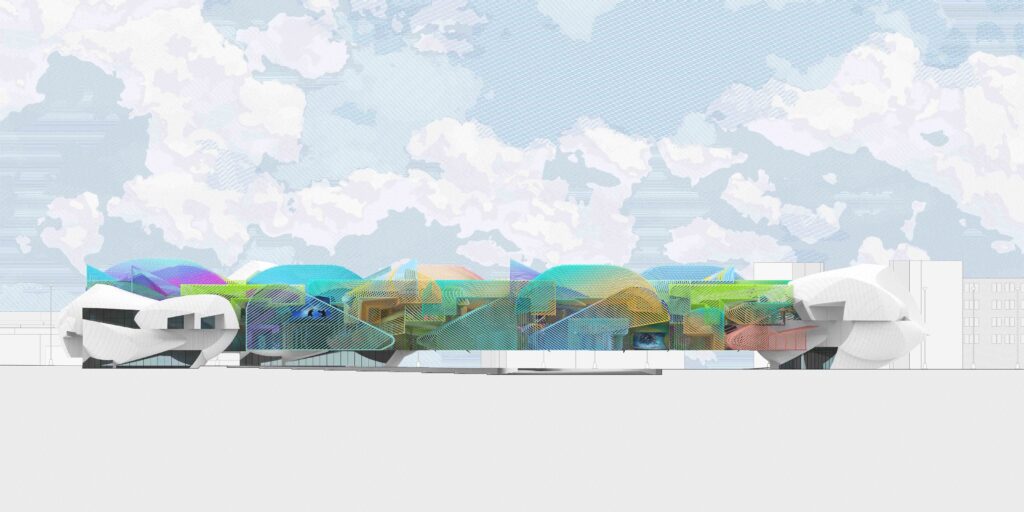
Vision (Elevation), Digital Rendering, 48×24 inch, 2018 © Andi Zhang
